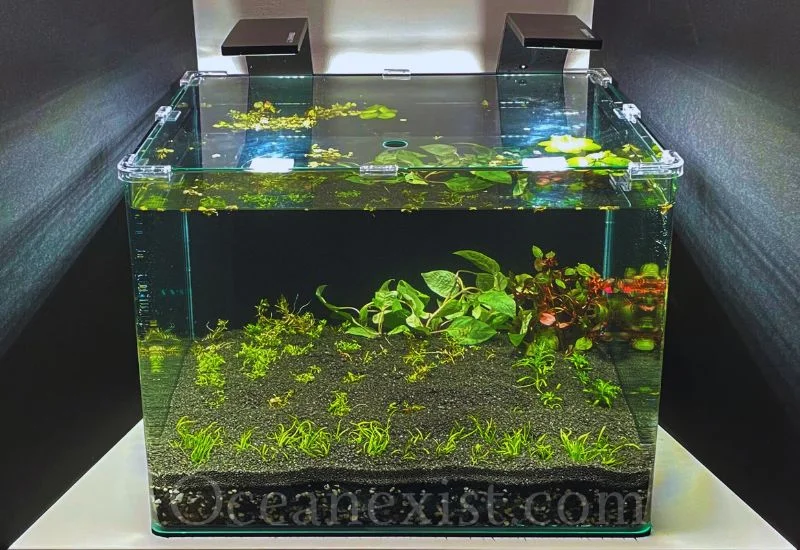Imagine you recall a perfect aquarium that lacks a filtration system; it will not take long before the water in the aquarium becomes toxic for your fish. This is where aquarium filtration comes into play. It ensures that the water is clean, filters out dangerous materials, and maintains a pleasant working condition.
When it comes down to contemplating fundamental aquarium filtration, you can establish the required biological environment that would benefit your fish.
In this post, differentiation of the types of filtration, their key features as well as the relevance of filtration to the overall viability of the aquarium is discussed;
What is Aquarium Filtration?
Aquarium filtration is the means of removing physical and dissolved waste products from the water of an aquarium.
This is vital in ensuring a good environment is created in which the aquatic fish, plants, and other related organisms can thrive. Filtration enables the water to remain clear, minimizes the accumulation of toxins, and maintains balance in the tank.
Importance of Filtration

Proper filtration is crucial for several reasons:
Water Clarity: Filtering reduces the impurities in the water, making it clear and appealing to the view.
Toxic Waste Removal: Fish and other animals release waste and if not removed can pile up which in turn is hazardous to other fish and animals. Such wastes are filtered by the specific filtration systems which inhibit frequent ammonia and nitrite concentrations in the aquarium.
Healthy Environment: Clean water contributes to the proper functioning and growth of the inhabitants.
Stable Ecosystem: Maintaining clean and healthy filtration systems aids in the creation and preservation of a healthy bioload in the tank.
Types of Aquarium Filtration

Here are the major types of aquarium filtration with the properties and examples discussed;
Mechanical Filtration
Mechanical filtration is aimed at physically cleaning the water of the particulate matter. Through this form of filtration the solid wastes, feed that remains uneaten, and plant materials are separated from the water and prevent from degrading the water quality.
Characteristics
Physical Removal: Mechanical filters help to filter water by physically trapping particles on the water channel walls.
Improves Water Clarity: These filters work by removing identifiable contaminants from the water so that the water does not appear hazy and full of floating particles.
Prevents Decomposition: Prevents small particles from being dispersed in the environment and breaking down in the natural world.
Examples
Sponge Filters: These filters employ the use of a sponge and are only ideal for cleaning. It is pacific and suitable for tanks with small and sensitive fish.
Pad Filters: Usually applied in the canister or hang-on back types of filters, they collect sediment as the water flows over them. It is versatile and can be applied to many kinds of filters.
Gravel Filters: These allow particles to be trapped by the substrate of gravel that is placed underneath them. They assist in maintaining the cleanliness of the substrate and can be used in filters, especially the under gravel type.
Biological Filtration
Biological filtration is a method that depends on helpful bacteria to change toxic ammonia and nitrite into comparatively safer nitrate. This process is called the nitrogen cycle and it is critical in the sustenance of a healthy aquarium.
Characteristics
- Bacterial Colonization: Filters are used to build a biofilm to promote the growth of beneficial bacteria on the media.
- Detoxification: These bacteria change ammonia and nitrite into a less toxic form, nitrate which can then be either siphoned out.
- Essential for Long-term Health: Its biological functionality level sets the initial stage for water balance and lifespan stability.
Examples
Bio Wheels: These give a large surface area that is preferred by useful bacteria to grow on. The processes of disintegration of the material and oxidation of bacteria are accelerated. Its wheel’s rotation ensures the bacteria are always in the water and contact with oxygen.
Ceramic Rings: When placed in filters they provide a large area for the bacteria to capture. Ceramic rings are fairly permeable and hence, bacterial colonies can multiply in a large number in the structure of the rings.
Live Rock: Live rock is used in marine tanks, and consists of rocks with beneficial bacteria in their microscopic pores. It also offers other environmental benefits since it contributes to the availability of extra shelters.
Chemical Filtration
Chemical removal uses water’s chemical characteristics to filter out soluble materials such as toxicants, odors, and color. This type of filtration employs specific media that capture contaminants through a chemical process that brings about their neutralization.
Characteristics
Targeted Removal: Chemical filters are meant to target particular materials that are not wanted in the water present in our homes.
Enhances Water Quality: Chemical filtration aid in maintaining clear water free of dissolved particles and eradicating bad smells.
Supplementary Filtration: Chemical filtration is not always required, but can solve some problems, and act as a second tier of the filtration process.
Examples
Activated Carbon: Common for its power to filter, that is to remove unwanted substances and to remove toxins. Activated carbon also helps in the removal of colors and unpleasant smells from the water.
Zeolite: It is a mineral that eliminates ammonia by exchanging it with something else. Specifically, zeolite can be used in the event of an ammonia spike to immediately reduce the concentration quickly.
Phosphate Removers: These media filter and get rid of phosphate which inhibits the growth of algae. In this way, these filters can manage phosphate levels that in turn control the growth of algae.
Purpose of the Aquarium Filtration

Aquarium filtration can therefore be defined as the act of maintaining the ultimate goal of aquarium water quality.
Pre-filtration units protect desirable organisms and exclude physical, chemical, and biological particulate matters.
The specified actions provide the water in the tank clean, eliminate the toxic substances within the pond, and provide suitable living conditions for fish and plants.
It also reduces dependence on water changes to maintain healthy aquatic homes thus reducing the tasks related to aquarium maintenance.
Benefits of Proper Filtration
Reduced Maintenance: Filtration helps to prevent the concentration of wastes therefore the frequency and amount of water changes required are minimal.
Healthier Fish and Plants: Filtration hence helps in preserving water quality thus preserving the life of the dwellers in the aquarium.
Balanced Ecosystem: Filtration ensures that the fish, the plants, and the beneficial bacteria all work correctly together, creating a balance.
Conclusion
It is incredibly important for any aquarium to get the foundations of the filtration systems used in aquariums. The proper system of mechanical, biological, and chemical approaches helps you ensure the proper condition of water in which your aquarium’s inhabitants would comfortably exist.
A regular attention to the problem of good filtration is required not only for the aquarium aesthetics but for the health of the inhabitants. If an appropriate filtration system is installed, then you can have a healthy and gorgeous aquarium.